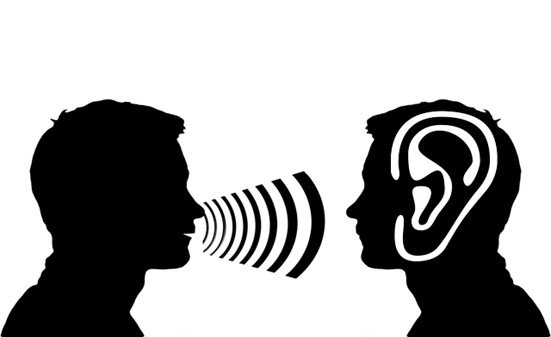In the realm of effective communication, where the power of active listening is often overlooked, Daniel Jossen emerges as a guiding force. With a keen ear attuned to the nuances of human interaction, Dan knows to not only hear, but truly listen. In the following article, Daniel Jossen unravels insights that become the bedrock of his success, displaying the transformative impact that attentive listening can have on professional and personal growth.
Have you ever found yourself in a conversation where you felt unheard or misunderstood or thought about if others ever felt the same? Imagine the impact that could be had on your personal and professional life if you truly mastered the art of active listening. Below is an exploration of the power of active listening techniques, which can help you unlock new insights that provide a deeper understanding, foster trust, and build stronger connections with others.
Daniel Jossen on the Role of Active Listening in Communication

Active listening plays an important role in effective communication, forming the bedrock of meaningful connections. Beyond merely hearing words, it involves putting in a deliberate effort to thoroughly understand the speaker’s emotions, nuances, and underlying messages. When individuals engage in active listening, they create an environment where communication becomes a reciprocal exchange. Daniel Jossen says that this process fosters a deeper understanding of the speaker’s perspective, reducing the likelihood of misunderstandings. By demonstrating genuine interest and focus, active listening transforms communication into a two-way street, enabling both parties to feel valued and heard.
In essence, the role of active listening is not just about hearing words, but about comprehending their holistic message and, in turn, building bridges of understanding and connection in various aspects of life.
Insights Gained from Practicing Active Listening
Practicing active listening yields a multitude of invaluable insights that transcend simple aspects of conversation. Firstly, it serves as a catalyst for vastly improved communication. By actively engaging with others and truly comprehending their messages, individuals foster clearer and more meaningful exchanges with each other. Dan Jossen says that attentive listening also serves as a potent tool in conflict resolution, as it enables an all-around thorough understanding of differing perspectives, paving the way for mutually satisfactory resolutions.
Improved Communication
One of the primary benefits of attentive listening is the enhancement of overall communication. By focusing on the speaker and demonstrating genuine interest, individuals can grasp the complete message while reducing the chance of misunderstandings or misinterpretations.
Conflict Resolution
Dan Jossen notes that this type of listening acts as an especially powerful tool when it comes to resolving conflicts. Understanding the root causes of disagreements and acknowledging each party’s perspective fosters a conducive environment for finding common ground and reaching a resolution that best satisfies all parties involved.
Building Trust and Empathy
Trust is the foundation of any healthy relationship, and attentive listening is the bridge to building that trust. In a conversational environment where people feel heard and understood, trust naturally flourishes. Additionally, empathizing with others’ experiences creates a sense of connection and mutual understanding.
Improving Collaboration and Teamwork
Daniel Jossen reports that in collaborative settings, such as workplaces or group projects, attentive listening is key to fostering teamwork. By actively engaging with colleagues’ ideas and concerns, individuals contribute to a collaborative environment where diverse perspectives are valued and integrated.
Increased Productivity
The clarity gained through attentive listening also contributes to increased productivity. By reducing the need for repeated communication and clarifications, individuals can streamline their tasks and achieve goals more efficiently.
Effective Leadership
Dan Jossen says that leadership is not just about giving orders; it’s about understanding the needs and aspirations of the whole team. Leaders who practice active listening are better equipped to make informed decisions, inspire their teams, and address challenges effectively.
Improved Decision-Making
Improved decision-making is a product of active listening, as it allows for a deeper understanding of various perspectives and factors. Practicing active listening helps us understand the speaker’s message and its context in a more comprehensive way.
This deeper understanding can lead to more informed and purposeful decision-making, benefiting both individuals and entire organizations.
Enhancing Personal and Professional Relationships
Personal and professional relationships are both strengthened through attentive listening, as it fosters trust, empathy, and mutual understanding. It also clearly shows our genuine interest and concern, fostering an environment suitable for open communication and empathy cultivation in our relationships. Daniel Jossen notes that this leads to stronger connections with others, in both personal and professional settings.
Active Listening Techniques for Deeper Understanding
 In the intricate dance of communication, mastering active listening techniques is the key to unlocking profound understanding. These techniques, when woven together, create a tapestry of connection and insight, enhancing the quality of our interactions.
In the intricate dance of communication, mastering active listening techniques is the key to unlocking profound understanding. These techniques, when woven together, create a tapestry of connection and insight, enhancing the quality of our interactions.
Mindful Presence and Focus
To cultivate deeper understanding through active listening, it is essential to remain fully present in the moment. Remove any distractions and dedicate your complete attention to the speaker, allowing for a more profound and uninterrupted connection.
Keep Good Eye Contact
Maintaining consistent eye contact conveys attentiveness and interest. It establishes a visual connection, indicating that you are actively engaged in the conversation and genuinely interested in what the speaker is conveying.
Observing Nonverbal Cues
Daniel Jossen explains that observing nonverbal cues helps to understand the speaker’s emotions and intentions beyond their words. Nonverbal cues, such as facial expressions, body language, and tone of voice, serve to supplement and further clarify the verbal message. Looking out for these cues can immensely help with providing a more complete understanding of the speaker’s message and responding more appropriately.
Asking Clarifying Questions
If any part of a conversation doesn’t seem entirely clear, asking clarifying questions
- Encourages open dialogue
- Ensures accurate comprehension of the speaker’s message
- Minimizes misunderstandings and ambiguities
- Ensures correct message interpretation
- Gathers relevant additional information
Seeking clarification can be beneficial in various situations to promote effective communication.
This technique can greatly enhance communication and foster a deeper understanding between conversation participants.
Be Patient
Patience is a key element of active listening. Allow the speaker to express themselves fully without interruption. This not only shows respect, but also gives the speaker the necessary time to fully articulate their thoughts and feelings.
Withhold Judgment
Suspending judgment during a conversation is crucial for fostering an open and honest exchange. By refraining from premature evaluations, you create a space where the speaker feels comfortable sharing their perspective without fear of criticism.
Overcoming Barriers to Attentive Listening
Daniel Jossen maintains that addressing the following barriers will pave the way for individuals to engage in more profound and meaningful exchanges of ideas, contributing to enhanced understanding and enriched communication.
Distractions and Multitasking
Overcoming distractions and avoiding multitasking are critical steps in fostering attentive listening. Create an environment conducive to focused communication by minimizing external interruptions, silencing electronic devices, and committing your full attention to the speaker. Dan Jossen reports that this ensures that your mind is not divided, allowing for a fully attentive listening experience.
Preconceived Notions and Biases
To address preconceived notions and biases, practice open-mindedness, suspend judgment, and approach conversations with curiosity. Being open to new ideas and perspectives and refraining from making judgments or assumptions facilitates attentive and unbiased listening. This will enable you to gain a deeper understanding of the speaker’s perspective and foster more meaningful connections.
Emotional Barriers and Personal Filters
Overcoming emotional barriers and personal filters requires self-awareness and introspection. Acknowledge and understand your emotions, recognizing how they might influence your initial reception of information. By consciously setting aside emotional influence, you create space for a more empathetic and unbiased interpretation of the speaker’s message.
Summary
In conclusion, active listening is a powerful tool that can lead to improved communication, stronger relationships, and enhanced personal and professional success. By mastering active listening techniques and overcoming common barriers, you can unlock a deeper understanding of others’ perspectives and foster trust, empathy, and mutual understanding. Begin practicing attentive listening today and watch as your connections with others flourish and your life is enriched.


